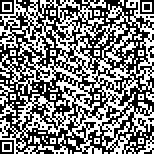宋彦澄,康立清,刘凤海,等.基于静息态fMRI技术观察经颅直流电刺激对脑梗死后图命名障碍患者语言相关脑区功能连接的影响[J].中华物理医学与康复杂志,2024,46(1):32-37
扫码阅读全文

|
| 基于静息态fMRI技术观察经颅直流电刺激对脑梗死后图命名障碍患者语言相关脑区功能连接的影响 |
|
| |
| DOI:10.3760/cma.j.issn.0254-1424.2024.01.007 |
| 中文关键词: 静息态功能磁共振成像 经颅直流电刺激 脑梗死 失语症 功能连接 |
| 英文关键词: re-fMRI tDCS Infarction Aphasia Functional connectivity |
| 基金项目: |
|
| 摘要点击次数: 3745 |
| 全文下载次数: 3410 |
| 中文摘要: |
| 目的 采用静息态功能磁共振成像(rs-fMRI)技术观察经颅直流电刺激(tDCS)对不同病程脑梗死后图命名障碍患者语言相关脑区功能连接(FC)的影响,从影像学角度探讨图命名功能的损伤及恢复机制。 方法 选取28例脑梗死后图命名障碍患者纳入患者组,根据其病程又进一步分为急性期组(共16例)和恢复期组(共12例),同时选取18例中老年志愿者纳入正常对照组。采用tDCS阳极刺激患者左侧外侧裂后部周围区(PPR),每周治疗5 d,治疗2周为1个疗程。于治疗前、治疗1个疗程后行rs-fMRI检查及汉语失语症心理语言评价(PACA)图命名量表评分,观察患者语言相关脑区的FC变化。 结果 治疗后急性期组及恢复期组患者PACA图命名评分均较治疗前明显改善(P<0.05)。与正常受试者比较,患者组双侧大脑半球均存在多个脑区与Wernicke区的FC减低,且以优势半球的改变更显著。经tDCS治疗后,发现急性期组及恢复期组患者双侧额颞叶与Wernicke区的FC均显著增强。进一步比较还发现,治疗后急性期组双侧颞枕叶FC均较治疗前明显增强;而恢复期组治疗前FC增强的左侧颞叶在治疗后FC则明显减低。 结论 fMRI技术可对脑梗死后图命名障碍患者语言相关脑区的FC变化进行精准、无创评估;tDCS可能通过增强双侧脑半球语言相关脑区(集中于额颞叶部位)与Wernicke区的FC以改善脑梗死患者的图命名功能。 |
| 英文摘要: |
| Objective To observe the effects of transcranial direct current stimulation (tDCS) on functional connectivity (FC) in language-related brain regions of patients with picture-naming dysfunction after cerebral infarction by using resting state functional magnetic resonance imaging(rs-fMRI). Methods Twenty-eight patients with post-infarction picture-naming dysfunction were divided into an acute stage group(n=16) and a recovery stage group(n=12) according to the course of the disease, and 18 middle-aged and elderly volunteers were recruited as the normal control group.The anodic tDCS was applied on the posterior perisylvian region(PPR) of the left sylvian of the patients,5 days a week for 2 weeks.Before and after the 2 weeks′ treatment,the rs-fMRI and Psycholinguistic Assessment of Chinese Aphasia (PACA)-picture-naming subscale were performed, and FC changes in language-related brain areas were observed. Results After treatment,the PACA scores of patients in both acute and recovery stage groups were significantly improved after treatment(P<0.05). Compared with normal subjects,FC in multiple brain regions and particularly the Wernicke area was reduced in both cerebral hemispheres among the patient group. It was more severe in the dominant hemisphere.After the tDCS treatment, FC in both frontotemporal lobes and in the Wernicke area was significantly enhanced in both the acute and recovery groups. Further comparison showed that in the acute group FC in both temporo-occipital lobes was significantly enhanced after treatment. In the recovery group, the enhanced FC in the left temporal lobe before the treatment was significantly reduced after treatment. Conclusion The fMRI technique can evaluate changes in brain connectivity in aphasia patients with picture-naming dysfunction after cerebral infarction accurately and non-invasively.tDCS may improve picture-naming function of stroke patients by enhancing the FC in bilateral language-related brain areas(concentrated in frontotemporal lobes) and Wernicke area. |
|
查看全文
查看/发表评论 下载PDF阅读器 |
| 关闭 |